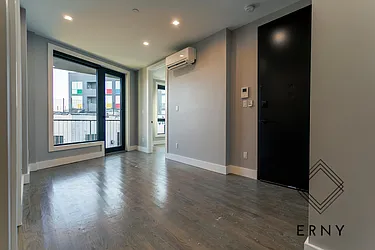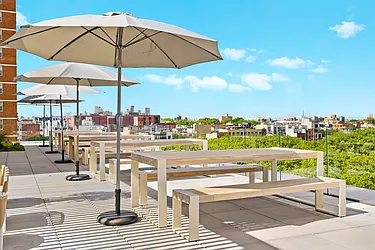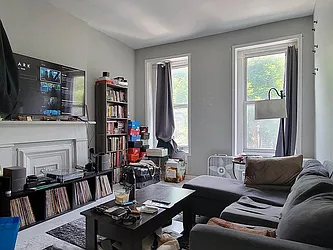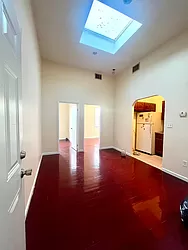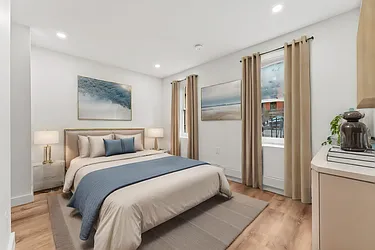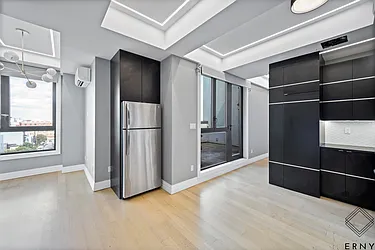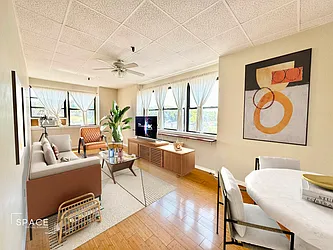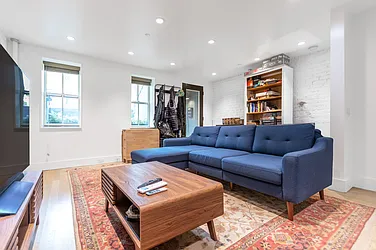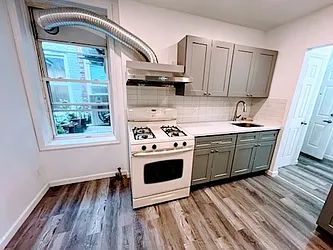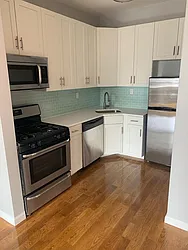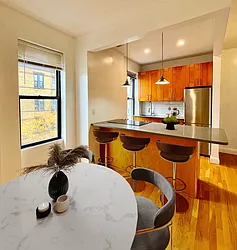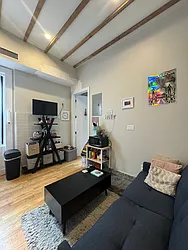COVID-19 + NYC Real Estate
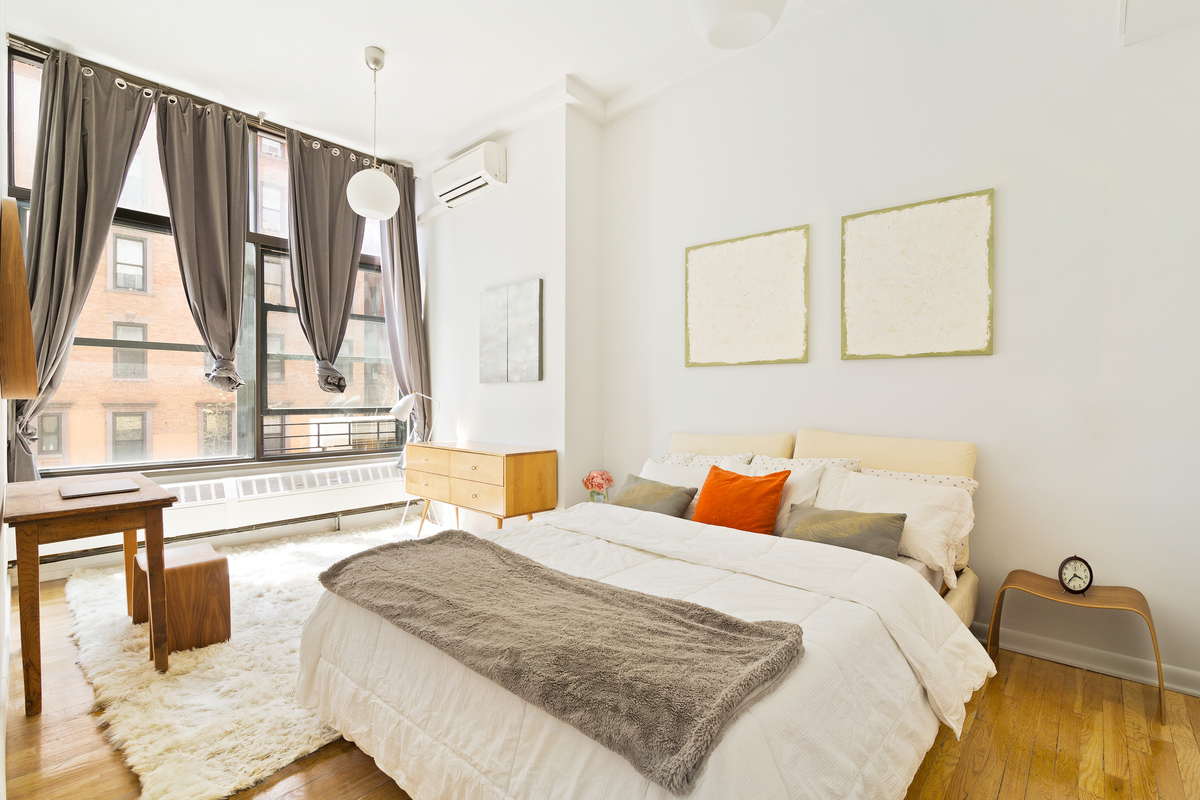
Are noisy neighbors disrupting your sleep? These tips will help you catch some z’s. (From a listing at 133 2nd Ave. #3)
Not too long ago, New Yorkers could handle living in a converted 1-bedroom with two roommates because they were able to leave and visit some of the world’s best restaurants, museums, and more. But these days, staying indoors is a big part of city life. And pesky problems that were once overlooked have now become major annoyances. For instance? Noise. Sirens and loud neighbors are driving locals crazy. It’s no wonder many urban dwellers want a soundproof apartment.
Luckily, there are ways to muffle the clatter. “The real hack in soundproofing is to create airspace between one space and another layer,” Adam Meshberg, Founder and CEO of Brooklyn-based Meshberg Group, tells StreetEasy.
So, whether you own or rent, the following ideas will preserve your sanity.
How to Soundproof a Ceiling
Squeaky floorboards upstairs were manageable when it was just for a few minutes a day. But it’s another story when you hear it for hours on end. While it’s best for the neighbors above to soundproof their floor, owners have the option of augmenting their ceilings to add an acoustical underlayment.
“Owners can remove the existing ceiling to access the subfloor [noise source],” said Mason Wyatt, owner of City Soundproofing. “They can then have someone treat the subfloor with multiple layers of mass [⅝ type X sheetrock] and damping compound [Green Glue], taking care to caulk [acoustical caulk] the seams where the sheetrock meets the joists. Add mineral wool insulation to the joist cavities. Employ isolation technology [resilient clips] and hang a new isolated ceiling from the clip system.”
Unfortunately, all of that construction is not possible for renters. So how can renters achieve soundproof apartment nirvana? The best thing to do is check to see if your upstairs neighbors are following the 80% carpet rule. Many building leases or co-op agreements stipulate that residents cover 80% of their floors with carpeting to muffle noise.
How to Soundproof a Door
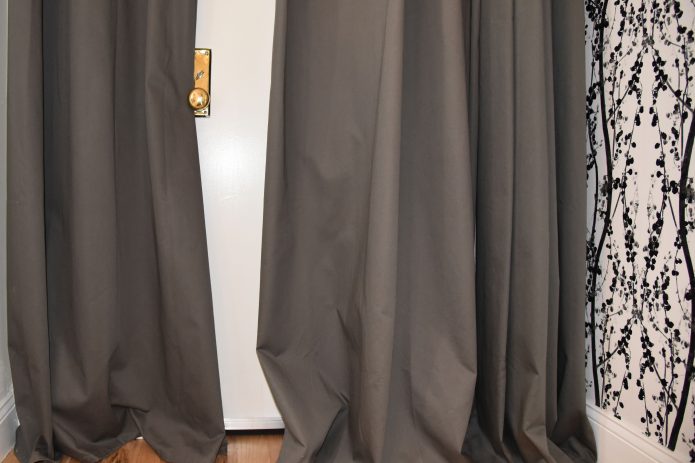
A StreetEasy editor covered her front door with a soundproofing curtain. (Deirdre Sullivan)
Noise can seep in through any sliver of an opening. So doors are an open invite for disturbances: Front doors can let in noise from the hallway, while bedroom doors can let in sound from the common space.
“Where air goes, noise goes,” says Wyatt. “So, if you own, install sound rated ‘hard seals’ and an automatic door bottom. Hard seals are fabricated from aluminum and have proven to be very effective in reducing noise at door gaps.”
Renters can use foam insulation tape. Use a 1/16th-inch thickness all around the door frame, except on the strike plate. And draft stoppers can help minimize external noise. “You can buy a portable one that you lay next to the door when it’s closed, or you can easily install a permanent one — many come with prepasted tape and are easy to affix,” says Alessandra Wood, Modsy’s VP of Style. Just make sure the material is installed on the sides and header of the door.
Here are two quick soundproofing hacks — in a dire scenario, you can even use a thick towel at the foot of the door, reveals Wyatt. Or you can follow the lead set by one of the StreetEasy editors. She covered her front entrance with a soundproofing curtain. It easily glides open and close.
Brooklyn Rentals Under $3,500 on StreetEasy Article continues below
How to Soundproof Windows
Even with your windows shut, sounds like sirens and people talking on the street can wake you from sleep or interrupt a work session. That’s why, if you can, the best thing to do is upgrade to double-pane windows. It can make a massive difference in dampening the noise. Bonus: Some construction projects that require only one worker (like installing windows) are still allowed during NYC lockdown.
If you’re unable to upgrade your windows, try sound deadening drapery instead. “You can combine shades with fabric drapery panels,” says Wood. “Opt for lined drapes and shades, and choose thicker drapery fabric for the best effect.”
Combine that with some acoustical caulking to ramp up the dampening effect. “Determine where the air is passing by holding your hand to the sides, top, and bottom of the window,” says Wyatt. “Seal the air gaps with a bead of acoustical caulk to reduce noise.”
There are also special noise-reducing window inserts, like those produced by Indow. They are acrylic glazing inserts with silicone compression tubing that you simply pop into the window to create a tight seal. This prevents noise from slipping in through the cracks, and the dead air space creates an additional buffer.
“Acrylic blocks sound better than glass, so outside noise has a harder time penetrating,” says Kathryn Foster, Marketing Communications Specialist at Indow. “The compression tubing creates a seal around the window. Anywhere air can go, sound can too, so once we seal the window, we seal out the sound.”
Inserts tend to work well in older buildings that might have out-of-square windows and less soundproofing. And no mounting hardware is needed — the compression tubing keeps the insert in place, which makes creating a soundproof apartment cheaper and easier.
How to Soundproof Thin Walls
It’s great to Netflix and chill, but not when you can hear your neighbors’ programming. Unfortunately, that common scenario is often a thin wall problem, rather than a volume one. So, what can you do?
“To soundproof thin walls, owners can buy foam insulation to fill cracks or purchase soundproofing panels,” says Meshberg. “Millwork is always a good idea as well, such as wall paneling, which gives a room depth and texture and reduces noise. This can be lined with a rubber backing.”
Even if you’re renting, you can install temporary insulation. “Hang [dimpled] one-pound mass loaded vinyl, or MLV, to the wall,” says Wyatt. “If appearance is a concern, add a thick fabric or curtain to cover the MLV, which is black in color.”
An even easier solution includes doing things like padding new walls with built-in bookcases or shelves. “Renters can hang tapestries or curtains to create air space,” says Meshberg. “Bookshelves, frames, or anything against a wall can be lined with sound-absorbing materials, like rubber backings, to help reduce noise.”
How to Soundproof Your Floor
Now that you know how to block sounds from noisy neighbors, you can work on being a considerate one yourself by soundproofing the loud spots in your pad.
For starters, you should be following the 80% covering rule. “Keep the majority of your floors covered with rugs and rug pads,” says Wood. “These make a huge difference, and they also help absorb sound within your own home.” Opt for a cut-pile rug over a loop pile, as it’s more effective at absorbing sound thanks to the open surface of the loop, and place a rug pad underneath.
“Rugs can be lined with rubber on the bottom, or or you can lay down a thin sheet of rubber, foam, etc., and layer over it with a rug,” says Mehsberg. You could also use interlocking foam tiling to cover the entire floor. Little Nomads, for example, designs play mats that look like carpeting.
If you are redoing floors, opt for a soundproof mat first, then put down your carpet or flooring. “For example, first we place a concrete slab, then a three-quarter-inch dense rubber sound mat, which is then layered with a material like plywood,” says Meshberg.
According to Wyatt, both renters and owners might be able to install the composite underlayment. “Renters can generally install wall-to-wall carpeting with the landlord’s permission. Then use products like a composite underlayment as well to cover the complete area that is generating the unwanted noise.”
Even if your floors are pretty solid, you might be using them a bit more intensely now (think home gym equipment like free weights and treadmills). If that’s the case, lay interlocking rubber pad tiles or room mats underneath the equipment. “Several versions are available, some are puzzle-fit or squares of one-to-two inches thick to function as an isolator for the impact noise,” says Wyatt. Options include an industrial Buffalo gym mat, rubber tiles, and rubber flooring rolls like the ones commercial gyms use. Now you can work out to your heart’s content, and avoid gaining the quarantine 15 in a soundproof apartment.
—
Whether you’re looking to rent or to buy, find your next NYC apartment on StreetEasy.

